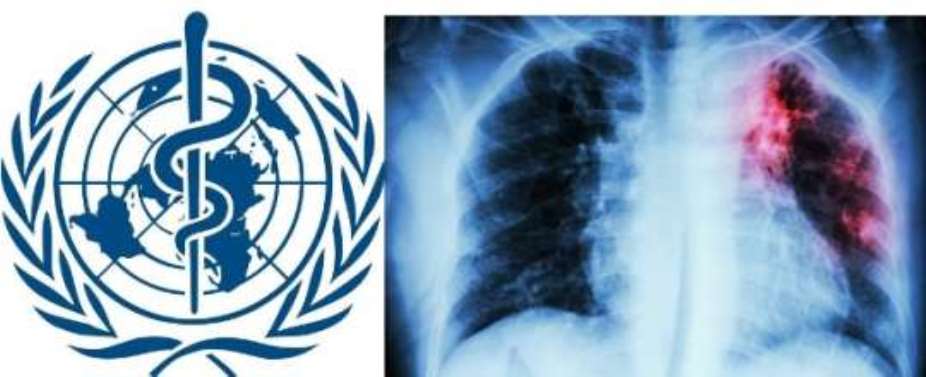Accra, Oct. 20, GNA - The 2016 Global Tuberculosis (TB) Report published by the World Health Organisation (WHO) has tasked countries to move faster to prevent, detect and treat the disease if they are to meet global targets.
The report, which was made available to the Ghana News Agency by Gregory Hartl, WHO Communications Officer, in Geneva, says governments have agreed on targets to end the TB epidemic within the context of the Sustainable Development Goals.
They include a 90 per cent reduction in TB deaths and an 80 per cent reduction in TB cases by 2030 compared with 2015.
'We face an uphill battle to reach the global targets for tuberculosis,' said Dr Margaret Chan, WHO Director General. 'There must be a massive scale-up of efforts, or countries will continue to run behind this deadly epidemic and these ambitious goals will be missed.'
In 2015, there were an estimated 10.4 million new TB cases worldwide. Six countries account for 60 per cent of the total burden, with India bearing the brunt, followed by Indonesia, China, Nigeria, Pakistan and South Africa.
The report says an estimated 1.8 million people died from TB in 2015, of whom 0.4 million were co-infected with HIV.
Although global TB deaths fell by 22 per cent between 2000 and 2015, the disease was one of the top 10 causes of death worldwide in 2015, responsible for more deaths than HIV and malaria.
It notes that gaps in testing for TB and reporting new cases remain major challenges, adding that with the estimated 10.4 million new cases, only 6.1 million were detected and officially notified in 2015, leaving a gap of 4.3 million.
It explains that this gap is due to underreporting of TB cases, especially in countries with large unregulated private sectors, and under-diagnosis in countries with major barriers to accessing care.
On tackling drug resistance and other challenges, the report says multidrug-resistant TB (MDR-TB) remains a public health crisis.
The WHO estimates that 480 000 people fell ill with MDR-TB in 2015[1]; with three countries carrying the major burden of MDR-TB - India, China, and the Russian Federation - which together account for nearly half of all cases globally.
It says detection and treatment gaps continue to plague the MDR-TB response; stating that in 2015, only one in five of the people newly eligible for second-line treatment were able to access it.
Cure rates continue to remain low globally at 52 per cent.
'The dismal progress in the TB response is a tragedy for the millions of people suffering from this disease,' Dr Mario Raviglione, Director of the WHO Global TB Programme.
'To save more lives now, we must get newly recommended rapid tests, drugs and regimens to those who need them. Current actions and investments fall far short of what is needed.'
The report says last year, 22 per cent of HIV-positive TB patients were not enrolled on antiretroviral therapy (ART).
According to WHO recommendations, ART needs to be made available for all HIV-positive TB patients.
The report says nearly a million children under five, and people living with HIV, who are especially vulnerable to TB, and who are eligible for preventive treatment, were able to access it in 2015; adding that this needs to be rapidly expanded.
On closing critical gaps in TB financing, the report says for TB care and prevention, investments in low and middle-income countries fall almost two billion dollars short of the $ 8.3 billion needed in 2016.
It said this gap would widen to $ 6 billion by 2020 if current levels of funding are not increased.
'The resources deployed against TB, the leading infectious killer in the world, are falling short,' said Dr Ariel Pablos-Méndez, Assistant Administrator for Global Health, of the United States Agency for International Development (USAID) - the leading bilateral funder of the TB response.
Dr Ariel Pablos-Mendez said: 'Everyone has a part to play in closing the gap. As the report shows, we need universal health coverage, social protection mechanisms, and public health financing in high burden countries.'
'The development aid community needs to step up more investments now, or we will simply not end one of the world's oldest and deadliest diseases.'
GNA





 We’re disappointed over gov’t’s lacklustre attitude to negotiations of our condi...
We’re disappointed over gov’t’s lacklustre attitude to negotiations of our condi...
 No more Buffer Stock as Mahama promises to decentralise SHS food supply
No more Buffer Stock as Mahama promises to decentralise SHS food supply
 NSS urges President Akufo-Addo to sign National Service Bill into law
NSS urges President Akufo-Addo to sign National Service Bill into law
 You're lying, your 7-11pm dumsor attributed to overloaded transformers is false ...
You're lying, your 7-11pm dumsor attributed to overloaded transformers is false ...
 Consult Council of State on anti-gay bill – Mahama advises Akufo-Addo
Consult Council of State on anti-gay bill – Mahama advises Akufo-Addo
 Transport Ministry has no power to determine fares – COPEC
Transport Ministry has no power to determine fares – COPEC
 Brace yourselves for more economic hardship – Prof Adei to Ghanaians
Brace yourselves for more economic hardship – Prof Adei to Ghanaians
 Any government depending on IMF is likely to fail – Grand Coalition
Any government depending on IMF is likely to fail – Grand Coalition
 Ghana risks losing premium cocoa position due to galamsey – COCOBOD laments
Ghana risks losing premium cocoa position due to galamsey – COCOBOD laments
 Akufo-Addo launches NSS policy document to tackle under-utilisation of service p...
Akufo-Addo launches NSS policy document to tackle under-utilisation of service p...
